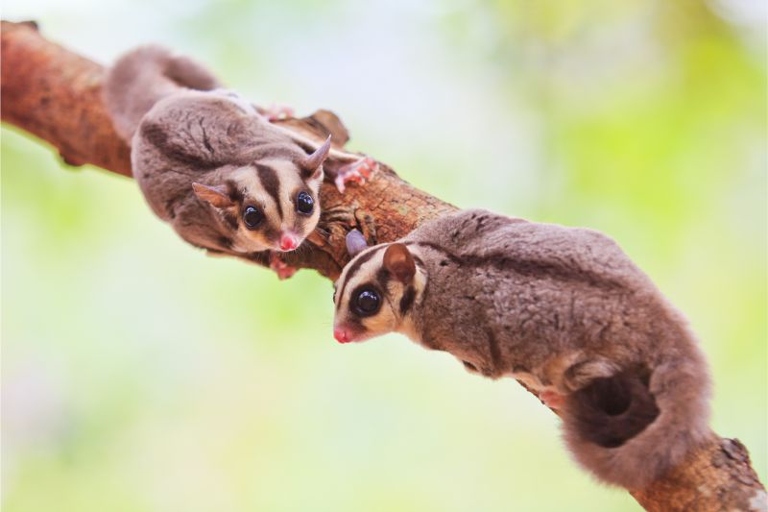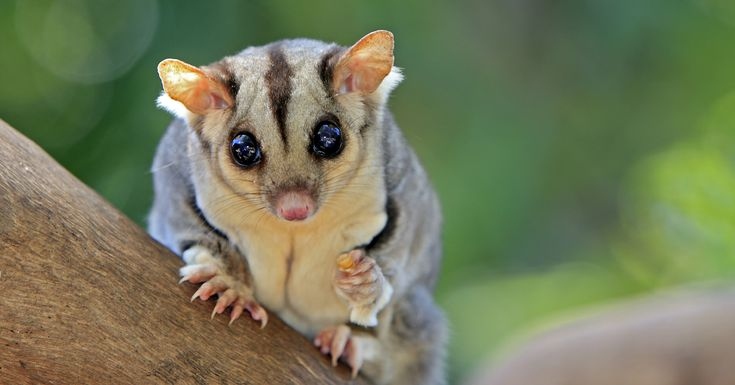Sugar gliders are small, nocturnal marsupials that are native to Australia, Indonesia, and New Guinea. They are becoming increasingly popular as pets in the United States. While they are generally considered to be gentle and docile animals, there have been some reports of sugar gliders biting and scratching people. In this article, we will discuss some tips to help you stay safe around sugar gliders.
Sugar Gliders Might Bite You
Sugar gliders are small, nocturnal marsupials that are native to Australia. They are often kept as pets, and while they are generally docile creatures, they can bite if they feel threatened.

While they are not typically aggressive towards humans, they may bite if they feel threatened or if they are trying to escape. Sugar gliders have sharp teeth that they use to eat their native diet of insects and small vertebrates.
If you are considering getting a sugar glider as a pet, it is important to do your research and be prepared to provide them with a safe and enriching environment. If you are bitten by a sugar glider, seek medical attention immediately as their bites can become infected.
Sugar Gliders Might Carry Diseases
They are often kept as pets in the United States, and can be found in pet stores or from breeders. While Sugar Gliders are generally considered to be low-maintenance pets, there is one potential downside to owning one: they might carry diseases that can be transmitted to humans. Sugar Gliders are small, nocturnal marsupials that are native to Australia, Indonesia, and New Guinea.

There are several diseases that Sugar Gliders can carry, including Salmonella, Streptococcus, and E. coli. Sugar Gliders can also carry parasites, such as mites and fleas, which can also transmit diseases to humans. These diseases can cause severe illness in humans, and in some cases, death.
While the risk of contracting a disease from a Sugar Glider is low, it is still important to take precautions to avoid coming into contact with their feces or urine. Sugar Gliders should also be kept away from small children, as they can easily transmit diseases to them. If you do decide to purchase a Sugar Glider, be sure to do your research and purchase one from a reputable breeder or pet store.
It’s Fine to Own Sugar Gliders
Sugar gliders are small, nocturnal marsupials that are native to Australia and Indonesia. They are not dangerous animals and make great pets for people who are willing to take care of them.
They are also very active and need a lot of space to run and play. They are not suitable for people who live in small apartments or who are not able to provide them with the care they need. Sugar gliders are very social animals and need to be kept in pairs or groups.

Sugar gliders can make great pets, but they are not for everyone. If you are considering getting a sugar glider, make sure you do your research and find a reputable breeder or rescue organization.
Is Buying a Sugar Glider Right for You?
Sugar gliders are small, marsupial animals that are native to Australia, Indonesia, and Papua New Guinea. Sugar gliders are becoming increasingly popular as pets in the United States, but there are some things you should know before you buy one. They get their name from their love of sweet foods and their ability to glide through the air.

If you are not prepared to give them the time and attention they need, they will become stressed and may become aggressive. Sugar gliders are not dangerous, but they can be nippy. They are also very active and require a lot of attention.
Before you buy a sugar glider, do your research to make sure they are the right pet for you. Talk to a veterinarian or someone who already owns a sugar glider to get more information.
Frequently Asked Questions
1. What are sugar gliders?
Sugar gliders are small, marsupial animals that are native to Australia, Indonesia, and Papua New Guinea. They get their name from their love of sweet foods and their ability to glide through the air.
2. Are sugar gliders dangerous?
No, sugar gliders are not dangerous. They are gentle and social creatures that can make great pets. However, there are some things you should know to stay safe around them.
3. How can I stay safe around sugar gliders?
There are a few things you should know to stay safe around sugar gliders. First, they are very agile and can jump long distances, so it’s important to keep them in a secure enclosure. Second, they have sharp claws and teeth that they use for defense, so it’s important not to startle them or put your fingers near their face. Finally, they are nocturnal animals, so it’s important not to disturb them during the day.
4. What should I do if I am bitten by a sugar glider?
If you are bitten by a sugar glider, it’s important to clean the wound immediately with soap and water. You should also contact your doctor or go to the emergency room to make sure the wound is not infected.
5. What should I do if I am scratched by a sugar glider?
If you are scratched by a sugar glider, it’s important to clean the wound immediately with soap and water. You should also contact your doctor or go to the emergency room to make sure the wound is not infected.
6. What should I do if I am having an allergic reaction to a sugar glider?
If you are having an allergic reaction to a sugar glider, it’s important to seek medical help immediately. Symptoms of an allergic reaction can include difficulty breathing, swelling of the face or throat, and hives.
7. What should I do if I see a sugar glider in the wild?
If you see a sugar glider in the wild, it’s important to leave it alone. These animals are protected by law in many countries, and it’s illegal to remove them from the wild.
8. What should I do if I find a sugar glider in my home?
If you find a sugar glider in your home, the best thing to do is to contact a local wildlife rehabilitation center. These centers can help the animal get back to its natural habitat.
9. What should I do if I think my pet sugar glider is sick?
If you think your pet sugar glider is sick, it’s important to contact a veterinarian who is experienced with these animals. Sugar gliders can be susceptible to a number of health problems, so it’s important to get them checked out by a professional if you think something is wrong.
10. Where can I find more information about sugar gliders?
If you want to learn more about sugar gliders, there are a number of resources available online and in libraries. You can also contact a local wildlife rehabilitation center or veterinarian to get more information.
Final thoughts
Sugar gliders are not dangerous, but there are some things you should know to stay safe. First, never try to pick up a sugar glider by the tail. Second, be careful when handling them, as they can bite if they feel threatened. Finally, make sure their cage is secure and escape-proof, as they are good climbers and jumpers. By following these simple tips, you can enjoy these adorable little creatures without worry.
